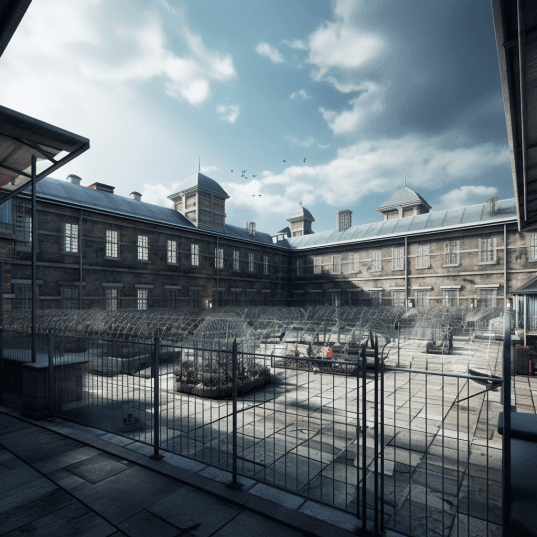UK Maximum Security Prisons

curity Prisons: An Overview
Introduction Maximum security prisons in the UK, known as Category A prisons, are designed to house the most dangerous and high-risk offenders. This article provides a comprehensive overview of the features, management, and role of these high-security facilities in the UK prison system.
Understanding Category A Prisons
Defining Maximum Security Prisons Category A prisons are facilities with the highest level of security in the UK. They are equipped to manage inmates who pose the greatest threat to public safety, national security, or have the potential to escape.
Classification of Inmates Inmates classified as Category A include those convicted of serious crimes like murder, terrorism, or organized crime. The classification is based on the risk they pose rather than the length of their sentence.
The Infrastructure of Maximum Security Prisons
Design and Security Features These prisons are designed with advanced security features, including reinforced walls, extensive CCTV surveillance, and controlled access points. The layout is structured to minimize the risk of escape and ensure close monitoring of inmates.
Specialized Security Measures Additional security measures can include electronic tagging, biometric identification, and high levels of staff supervision.
Strict Routine and Control Inmates in Category A prisons experience a highly controlled and regimented daily routine. This includes restricted movement, high staff-to-inmate ratios, and limited access to prison amenities.
Access to Rehabilitation and Education Despite the restrictions, these prisons offer rehabilitation and educational programs tailored to the high-risk nature of the inmates. The aim is to reduce reoffending risk upon release.
The Role of Staff in Maximum Security Prisons
Highly Trained Personnel Staff in maximum security prisons are specially trained to handle high-risk offenders. This includes training in security procedures, crisis management, and offender rehabilitation.
Challenges Faced by Staff Working in a maximum security environment presents unique challenges, including maintaining safety and managing inmates with complex needs.
Safety and Welfare in High-Security Prisons
Ensuring Inmate Safety The safety and welfare of inmates are paramount. Measures are in place to prevent violence, self-harm, and provide mental health support.
Balancing Security and Human Rights UK maximum security prisons strive to balance stringent security measures with the need to uphold the human rights and dignity of inmates.
The Process of Category A Classification
Assessment and Review The classification of inmates as Category A is a rigorous process involving assessment by the prison service, security services, and regular reviews to determine if the classification remains appropriate.
Rehabilitation in Maximum Security Prisons
Focus on Reducing Reoffending Rehabilitation programs in these prisons focus on addressing the behavior and circumstances that led to the inmate’s imprisonment, aiming to prepare them for eventual reintegration into society.
Challenges in Rehabilitation The high-security environment poses unique challenges to rehabilitation, requiring specialized programs and approaches.
Technology and Innovation in Maximum Security Prisons
Adopting Advanced Technologies UK maximum security prisons are at the forefront of adopting technology for security and management, including AI surveillance and electronic monitoring.
Innovations in Inmate Management Innovations include advanced risk assessment tools and rehabilitation programs using virtual reality and other technology-driven methods.
Conclusion
UK maximum security prisons play a critical role in the country’s criminal justice system, housing the most high-risk offenders while maintaining a focus on security, rehabilitation, and reintegration. These facilities balance the need for stringent security measures with the goal of rehabilitating inmates and preparing them for a return to society, ensuring the safety of both the public and the prison population.


